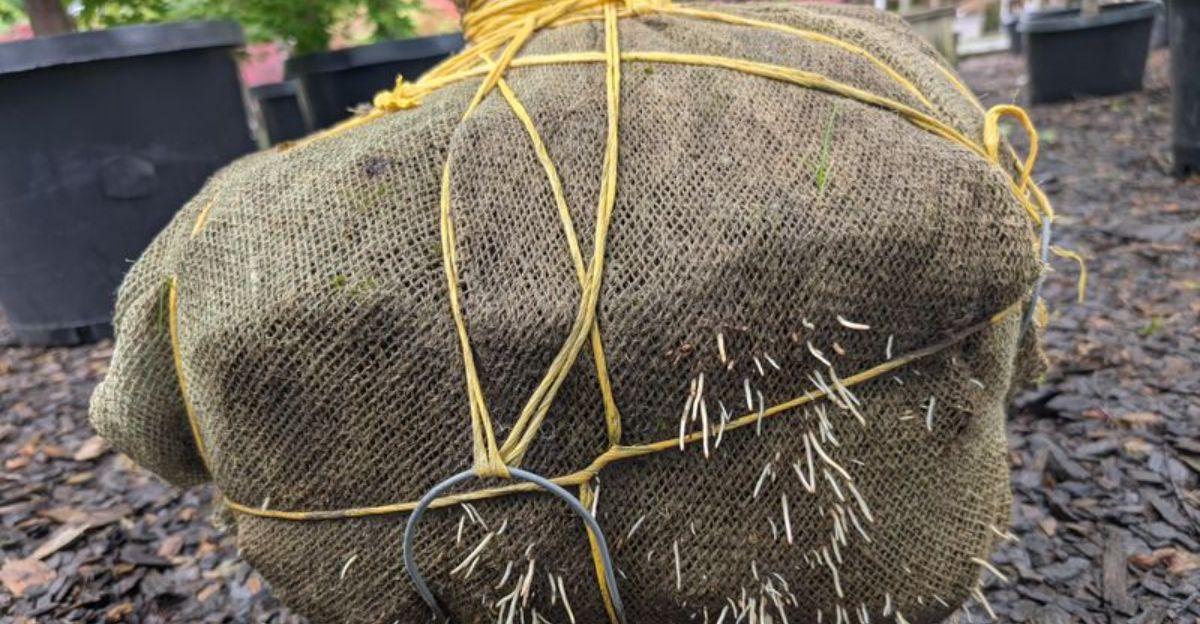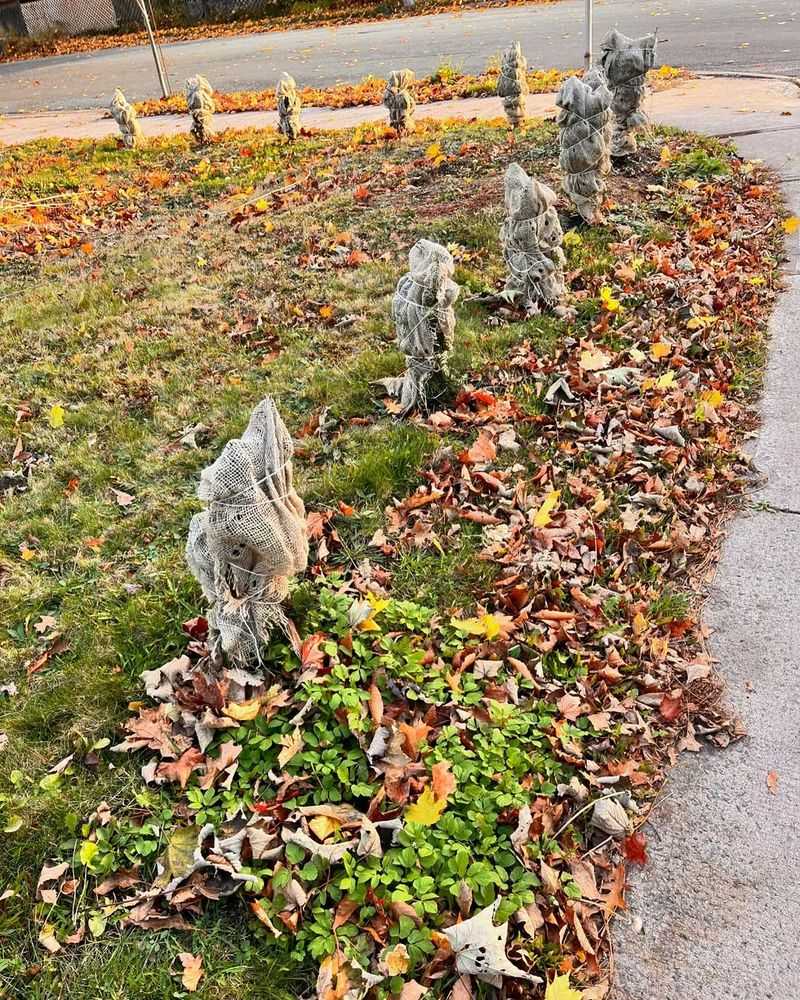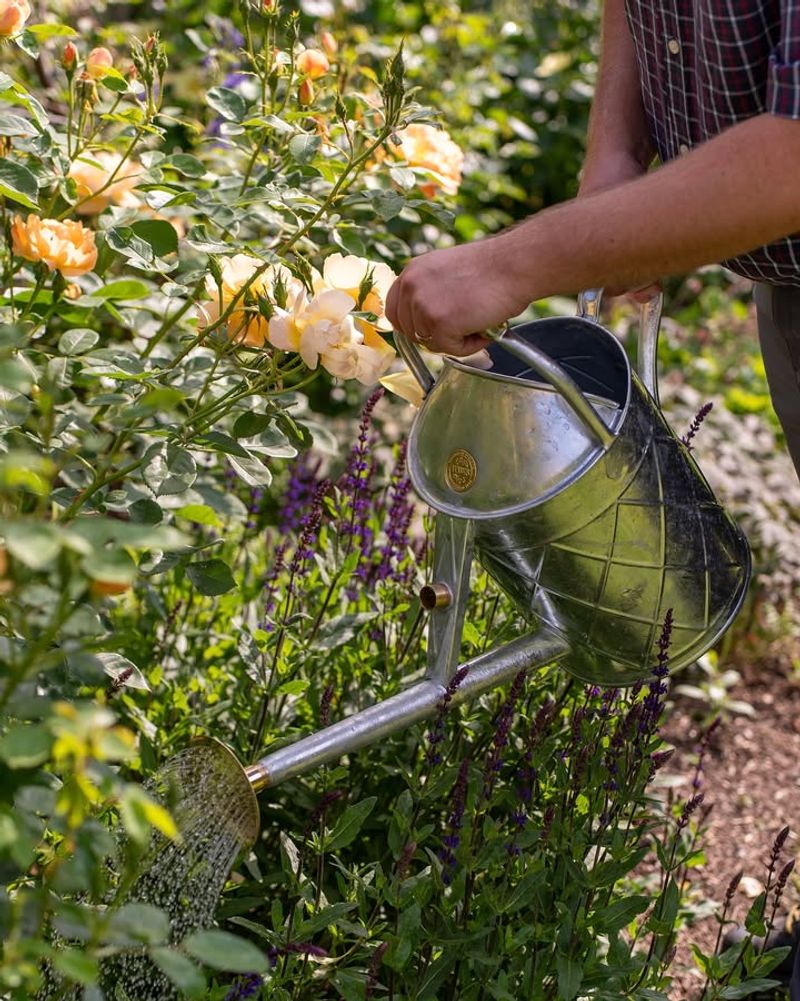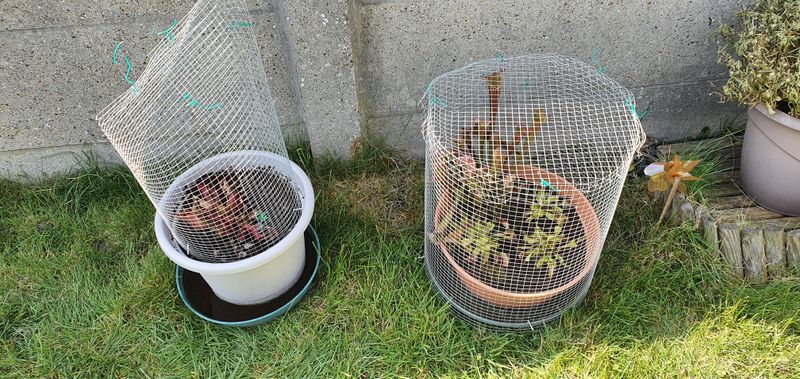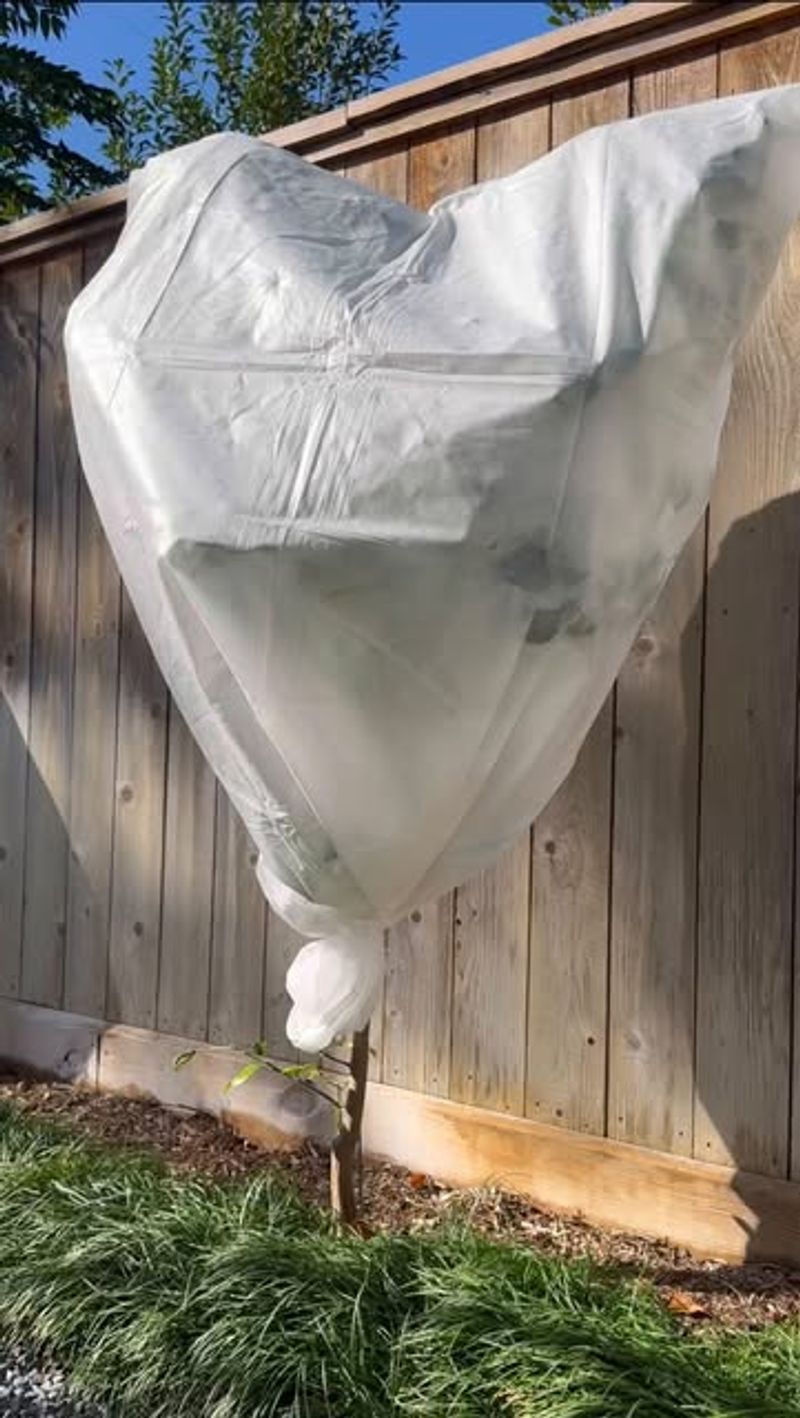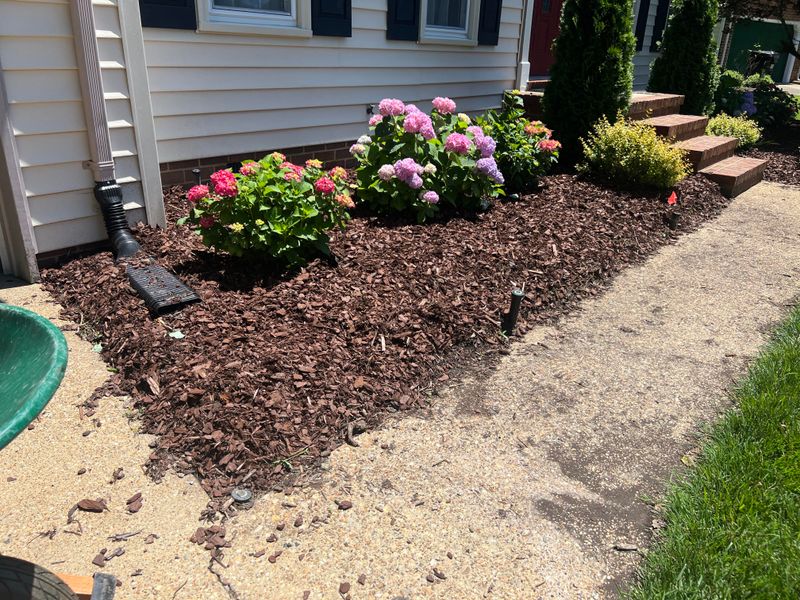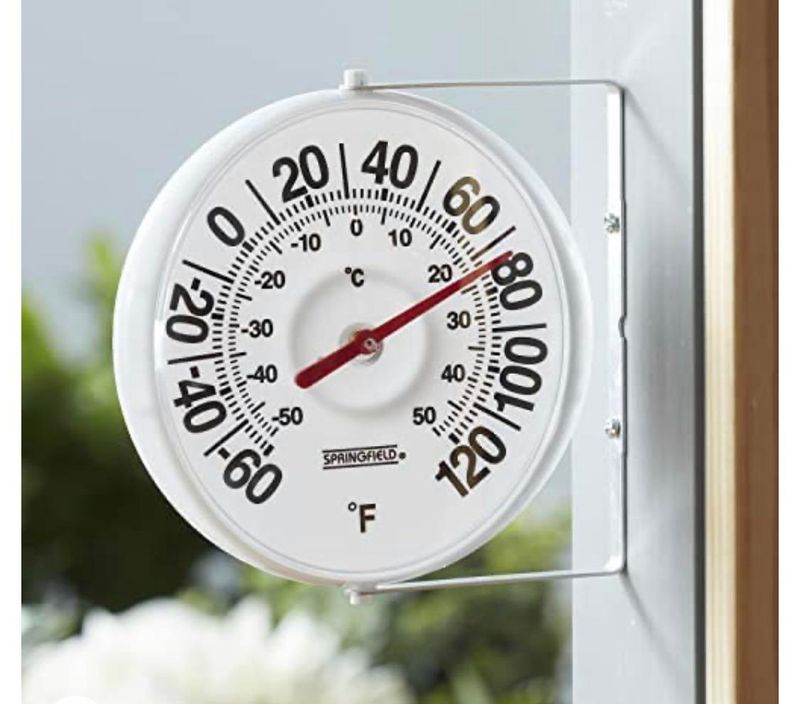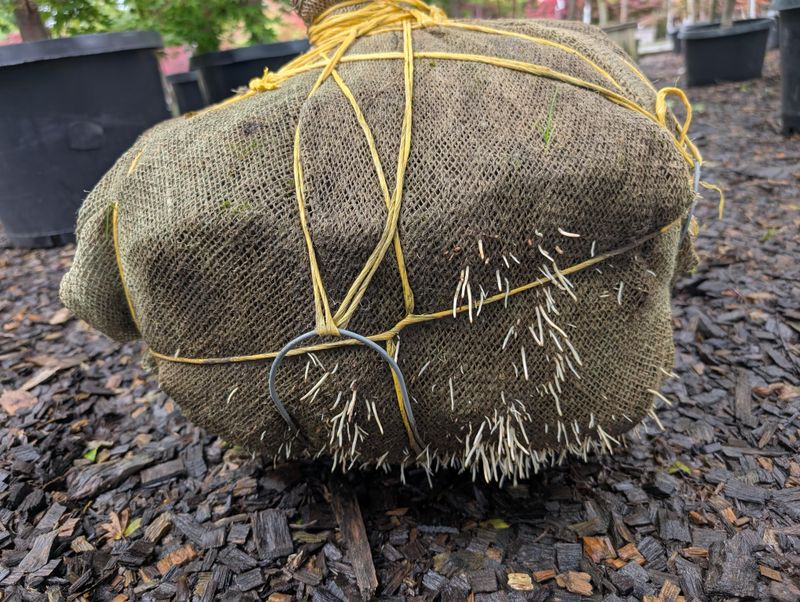Cold snaps sweep through with little warning, and ornamentals face sudden stress that leaves homeowners scrambling for protection.
A single frost can scorch the tips or crack delicate stems, so the right safeguard makes a world of difference.
Many folks try quick fixes, yet improper wrapping traps moisture or weighs branches down.
A precise method stands above the rest and shields shrubs without harm.
Once that tactic enters the routine, plants withstand icy nights with confidence and greet spring in far better shape.
Choose Breathable Materials For Wrapping
Burlap stands out as one of the best choices when protecting shrubs from Oregon’s chilly winters.
This natural fabric allows air and moisture to circulate while blocking harsh winds and frost.
Unlike plastic, which traps moisture and can actually harm your plants, burlap lets them breathe naturally.
Garden centers across Oregon stock various breathable fabrics specifically designed for plant protection.
Row covers and frost blankets work wonderfully too, offering different levels of insulation depending on your shrub’s needs.
These materials come in various weights, so you can match the protection level to your specific climate zone.
Avoid using plastic sheeting or tarps directly on your shrubs, as they create condensation problems.
When moisture gets trapped inside, it can freeze against the leaves and branches, causing more damage than protection.
The key is finding materials that shield without suffocating.
Before purchasing, check the fabric’s weight and insulation rating.
Heavier materials provide better frost protection but might be too much for milder Oregon winters.
Consider buying enough material to wrap your shrubs loosely, leaving room for air circulation while still providing adequate coverage against freezing temperatures.
Time Your Wrapping Correctly
Getting the timing right makes wrapping shrubs much more effective at preventing frost damage.
Most Oregon gardeners should start thinking about protection in late October or early November, depending on their specific location.
Coastal areas might wait longer, while those in higher elevations need to act sooner.
Watch your local weather forecasts closely as temperatures begin dropping.
The first hard freeze typically signals it’s time to start wrapping vulnerable shrubs.
Don’t wait until after frost damage appears, because prevention works better than trying to save already-injured plants.
Wrapping too early creates its own problems, though.
Shrubs need cool fall temperatures to properly harden off and prepare for winter dormancy.
If you wrap them while it’s still relatively warm, you might interfere with this natural process and actually weaken the plants.
Keep a garden journal tracking when you wrap each year and noting frost dates.
This information becomes incredibly valuable over time, helping you predict the perfect wrapping window for your specific property.
Remember that microclimates exist even within small yards, so some shrubs might need protection before others do.
Water Shrubs Thoroughly Before Wrapping
Well-hydrated shrubs handle cold weather significantly better than thirsty ones.
Water acts as an insulator inside plant cells, helping them resist freezing damage when temperatures plummet.
Before wrapping your shrubs, give them a deep, thorough watering to ensure they enter winter with adequate moisture reserves.
Focus on soaking the soil around the root zone rather than spraying the leaves.
Deep watering encourages roots to absorb maximum moisture, which they’ll need throughout the dormant season.
Oregon’s winter rains help, but a good pre-winter watering ensures your shrubs start the cold season properly hydrated.
Timing this watering matters too.
Water during the day when temperatures are above freezing, allowing the soil to absorb moisture before nighttime cold arrives.
Avoid watering if a hard freeze is predicted within the next few hours, as surface moisture can freeze and damage roots.
Check soil moisture by digging down a few inches near the shrub base.
If the soil feels dry or barely damp, it’s time to water.
Established shrubs need about an inch of water, while newly planted ones might require more to build strong root systems before winter truly sets in.
Create A Sturdy Frame Around Delicate Shrubs
Building a support frame prevents wrapping material from crushing delicate branches under heavy snow or ice.
Stakes, bamboo poles, or wire cages work perfectly for creating protective structures that hold fabric away from the shrub itself.
This method proves especially important for evergreens with brittle branches that snap easily under weight.
Start by placing three or four stakes around the shrub’s perimeter, pushing them firmly into the ground.
Make sure they’re tall enough to extend above the shrub’s highest point by several inches.
Connect the stakes with string or wire to create a stable framework that won’t collapse.
For larger shrubs, consider using tomato cages or creating a teepee-style structure with longer poles.
The goal is building something strong enough to support your wrapping material without touching the plant’s branches.
This air gap provides insulation while preventing physical damage from accumulated precipitation.
Once your frame stands secure, drape your breathable fabric over it, securing the material to the stakes rather than the shrub.
This technique works wonderfully for boxwoods, azaleas, and other ornamental shrubs that Oregonians love but that struggle with heavy, wet snow.
Remember to leave the bottom slightly open for air circulation.
Secure Wrapping Materials Properly
Loose wrapping materials blow away during Oregon’s notorious winter windstorms, leaving your shrubs exposed and vulnerable.
Proper securing keeps protection in place throughout the entire cold season.
Use soft twine, garden tape, or clothespins rather than wire or string that might cut into branches as they sway in the wind.
Start securing at the bottom, working your way up the shrub while keeping the material snug but not tight.
You want the fabric to stay in place without constricting the plant or preventing air circulation.
Think of it like wrapping a gift loosely rather than creating a tight package.
Space your ties every twelve to eighteen inches along the shrub’s height.
This prevents gaps from forming where cold air and frost can penetrate.
Pay special attention to the top, ensuring it’s completely covered and secured so rain and snow can’t collect inside the wrapping.
Check your secured wrappings after major windstorms throughout winter.
Oregon’s weather can be unpredictable, and materials sometimes work loose despite your best efforts.
Quick adjustments prevent problems and ensure continuous protection.
Consider using bungee cords for extra security on particularly windy properties or exposed locations.
Add Mulch Around The Base
Protecting roots matters just as much as shielding branches from frost damage.
A thick layer of organic mulch around your shrub’s base insulates the root zone, maintaining more consistent soil temperatures throughout winter’s freeze-thaw cycles.
This simple step significantly reduces stress on the entire plant.
Apply mulch in a donut shape around the shrub, keeping it a few inches away from the stem or trunk.
Piling mulch directly against the plant invites rot, pest problems, and disease issues.
Aim for a layer three to four inches deep, extending outward to cover the entire root zone beneath the branch canopy.
Bark chips, shredded leaves, compost, or straw all work beautifully as winter mulch in Oregon gardens.
These materials break down slowly, adding nutrients to the soil while providing insulation.
Avoid using fresh wood chips, as they can temporarily deplete soil nitrogen as they decompose.
Mulching also helps retain soil moisture during winter dry spells, which happen more often than people realize in Oregon.
The layer acts as a blanket, reducing water evaporation and keeping roots hydrated.
Come spring, simply refresh the mulch layer as needed rather than removing it completely.
Monitor Temperature And Adjust Protection
Oregon winters bring unpredictable temperature swings that require gardeners to stay alert and responsive.
Installing an outdoor thermometer near your shrubs helps you track conditions and adjust protection as needed.
Some weeks might be mild enough to remove wrapping temporarily, while sudden cold snaps require extra layers.
During unseasonably warm stretches, consider unwrapping shrubs for a few days to prevent overheating and excess moisture buildup.
Plants can actually suffer when kept too warm during their dormant period.
Just keep wrapping materials handy for quick reinstallation when forecasts predict returning cold.
Pay attention to nighttime lows especially, as frost damage typically occurs during these hours.
Even if daytime temperatures feel comfortable, freezing nights still threaten tender shrubs.
Modern weather apps make tracking temperature patterns easier than ever, sending alerts when conditions turn dangerous.
Different shrub species tolerate varying temperature ranges, so research your specific plants’ cold hardiness.
Some handle brief dips below freezing without problems, while others suffer damage at temperatures just below thirty-two degrees.
Understanding these differences helps you provide appropriate protection levels rather than over or under-protecting your landscape investments.
Remove Wrapping At The Right Time
Knowing when to unwrap shrubs proves just as important as knowing when to wrap them initially.
Remove protection too early, and late spring frosts can damage tender new growth.
Leave wrapping on too long, and you risk overheating plants or encouraging disease problems as temperatures rise and growth resumes.
Most Oregon gardeners can safely remove shrub wrapping in late March or early April, depending on their specific location and elevation.
Watch for consistent nighttime temperatures staying above freezing and pay attention to your shrubs’ natural signals.
When buds begin swelling, it’s usually safe to unwrap.
Remove wrapping on a cloudy day if possible, giving shrubs time to adjust gradually to direct sunlight.
Sudden exposure to bright sun after months of covering can shock plants, especially evergreens.
If you must unwrap on a sunny day, consider doing it in late afternoon when light intensity decreases.
Inspect shrubs carefully as you remove wrapping materials, checking for any signs of damage, disease, or pest problems that developed during winter.
Address issues immediately rather than letting them worsen.
Store clean, dry wrapping materials properly for reuse next season, saving money while reducing waste in your gardening practices.

